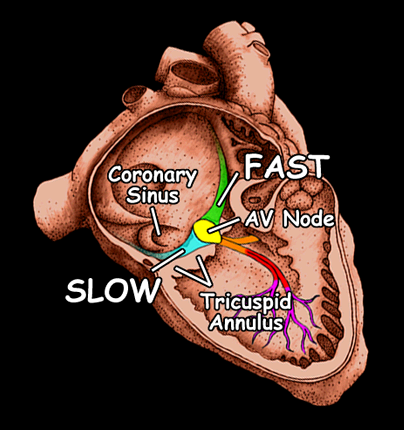
Anatomically and functionally discrete pathways with different conduction velocities and different refractory periods exist within the AV node and perinodal tissues. These pathways are referred to as the “fast” and “slow” pathways and are capable of providing the substrate for AV nodal re-entry, even in the absence of an AV nodal bypass tract.
The fast pathway involves the interatrial septum, the anterior approaches to the AV node and the anterior portion of the node itself. It conducts more rapidly but has a longer refractory period than the slow pathway which lies between the coronary sinus ostium and the tricuspid annulus and involves the posterior portion of the node.
